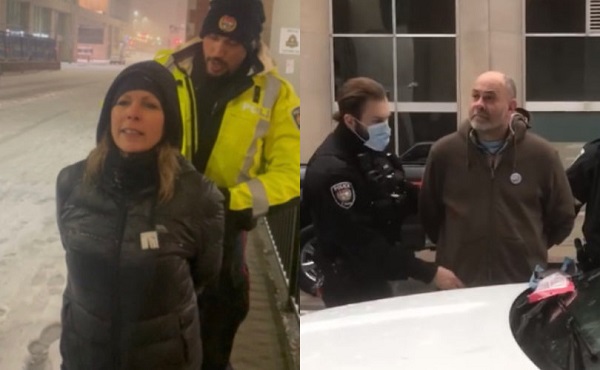Community
City Releases Full Report On 2016 Point In Time Homeless Count
Background
On October 19, 2016, The City of Red Deer worked with community partners to conduct the third Point-inTime Homeless Count. The City of Red Deer coordinates the Homeless Count as part of its work supporting EveryOne’s Home: Red Deer’s 10 Year Plan to End Homelessness. Approximately 300 volunteers and 15 organizations participated in the local count. It was also the second provincially-coordinated Point-in-Time Count with Alberta’s 7 Cities on Housing & Homelessness. In 2014, Alberta was the first jurisdiction in Canada to implement measures toward a standardized Point-in-Time count methodology.
A Point-in-time count is a snapshot of sheltered and unsheltered homeless people in a community on a single night. The count captures numbers and demographic information of individuals experiencing homelessness at a single point in time. This count serves two important functions: it provides a current snapshot of our overall homeless population and enables us to examine how this population changes over time. It also helps to measure progress towards ending homelessness and inform system planning and program development to support the goal of ending homelessness by 2018 in Red Deer.
PiT Count Scope, Approach and Design
Definitions & Scope of the Count
The scope of this count is focused on those experiencing homelessness that are sheltered and unsheltered. The scope of Red Deer’s Count does not include the count of hidden homelessness (e.g., people who are “couchsurfing”). Homelessness describes the situation of an individual or family without stable, permanent, appropriate housing, or the immediate prospect, means and ability of acquiring it. For the purposes of this count homelessness was broadly defined and categorized into two major typologies in terms of the scope of the count.
Sheltered Homeless:
This includes individuals and families in the count who were identified as homeless and who stayed overnight in an emergency shelter, safe house, detox centre, or remand centre on the night of the count. It also includes those who stayed in hotels and motels paid for by the non-profit agencies and various levels of government.
Unsheltered Homeless:
This includes all homeless individuals in the count who completed a street survey, meaning that they were encountered in parks, on the streets or sidewalks, at drop-in centres, or participating in meal programs the next day after the count.
Methodology
The City of Red Deer adopted a census approach to the 2016 PiT Count through the sheltered and unsheltered methodology. Occupancy totals were obtained from shelter providers, transitional housing and public systems. A comprehensive outdoor enumeration was conducted with full coverage of the community and known locations. Red Deer was street zoned into 108 neighbourhoods and canvassed by 219 volunteers. As well, 42 known locations were covered by 16 ‘specialized teams’, consisting of pairs of outreach workers, to capture the most accurate number of homeless persons possible. A next day survey was also conducted at two locations to increase the coverage.
Survey coverage in 2016 was expanded to include all units of the Red Deer Regional Hospital, Correctional Facilities (Remand Centre), and Transitional Housing with less than 2-year term (John Howard Society). There was no change in the methodology or the number of shelters covered compared to the previous count in 2014. This methodology change to expand site coverage for transitional housing and public system data resulted in an increased scope of surveying individuals who may be experiencing homelessness. With this expanded site coverage in 2016, the number of people counted as experiencing homelessness in Red Deer is 149 (increase of 8.8% from 2014 to 2016). Additionally, the plant-capture method was used for quality assurance.
Summary of Key Findings
- 149 – The number of people counted as experiencing homelessness in Red Deer was 149. This is an increase of 8.8% from 2014 to 2016.
- 37 – 37 of the people experiencing homelessness were unsheltered – meaning they spent the night on the street or in parks, up from 22 in the previous count of 2014.
- 77 – 77 people were staying in an emergency shelter on the night of the count. The numbers from the emergency shelters in 2016 dropped by 19.5% from the previous count of in 2014.
- 17 – 17 people were staying in transitional housing on the night of the count.
- 18 – An additional 18 people were provisionally accommodated in public systems were counted.
- 3/4 – Three quarters of people experiencing homelessness in Red Deer are male.
- 23% – 23% of respondents were homeless youth under the age of 25.
- 5% – Seniors above the age of 65 accounted for almost 5% of Red Deer’s homeless population.
- 5% – Out of the total population surveyed, 5% indicated they belong to the LGBTQ2S community.
- 33% – Up to a quarter of individuals surveyed lived in Red Deer less than three months before the count and overall 33% lived in Red Deer less than a year.
- 43% – 43% were chronically homeless individuals and families compared to 35.4% in 2014.
- 50% – 50% of respondents indicated this was their first time homeless.
- 8% – 8% of respondents reported full time employment income – meaning that some of those experiencing homelessness were working but could not make ends meet to afford housing.
- 71% – 71% of respondents who were unsheltered self-identified as having some form of addiction. The disproportionate number of homeless persons with addictive disorders is significant in terms of service provision and supports.
- 7% – Veterans accounted for 7% of Red Deer’s homeless population. The data revealed a slight increase in the veteran homelessness between the 2014 and 2016.
- 40% – Aboriginal people make up 40% of Red Deer’s homeless population, despite constituting only 5.2% of Red Deer’s residents as per Statistics Canada Census Data.
Community
Support local healthcare while winning amazing prizes!

|
|
|
|
|
|
Community
SPARC Caring Adult Nominations now open!

Check out this powerful video, “Be a Mr. Jensen,” shared by Andy Jacks. It highlights the impact of seeing youth as solutions, not problems. Mr. Jensen’s patience and focus on strengths gave this child hope and success.
👉 Be a Mr. Jensen: https://buff.ly/8Z9dOxf
Do you know a Mr. Jensen? Nominate a caring adult in your child’s life who embodies the spirit of Mr. Jensen. Whether it’s a coach, teacher, mentor, or someone special, share how they contribute to youth development. 👉 Nominate Here: https://buff.ly/tJsuJej
Nominate someone who makes a positive impact in the live s of children and youth. Every child has a gift – let’s celebrate the caring adults who help them shine! SPARC Red Deer will recognize the first 50 nominees. 💖🎉 #CaringAdults #BeAMrJensen #SeePotentialNotProblems #SPARCRedDeer
s of children and youth. Every child has a gift – let’s celebrate the caring adults who help them shine! SPARC Red Deer will recognize the first 50 nominees. 💖🎉 #CaringAdults #BeAMrJensen #SeePotentialNotProblems #SPARCRedDeer
-

 2025 Federal Election2 days ago
2025 Federal Election2 days agoMark Carney refuses to clarify 2022 remarks accusing the Freedom Convoy of ‘sedition’
-

 Catherine Herridge1 day ago
Catherine Herridge1 day agoFBI imposed Hunter Biden laptop ‘gag order’ after employee accidentally confirmed authenticity: report
-

 International1 day ago
International1 day agoTrump’s ‘Golden Dome’ defense shield must be built now, Lt. Gen. warns
-

 2025 Federal Election1 day ago
2025 Federal Election1 day agoDon’t let the Liberals fool you on electric cars
-

 Crime1 day ago
Crime1 day agoFirst Good Battlefield News From Trump’s Global War on Fentanyl
-

 Courageous Discourse9 hours ago
Courageous Discourse9 hours agoEurope Had 127,350 Cases of Measles in 2024
-

 COVID-192 days ago
COVID-192 days agoMaxime Bernier slams Freedom Convoy leaders’ guilty verdict, calls Canada’s justice system ‘corrupt’
-

 Immigration2 days ago
Immigration2 days agoImmigrant background checks are unrelated to national security?







